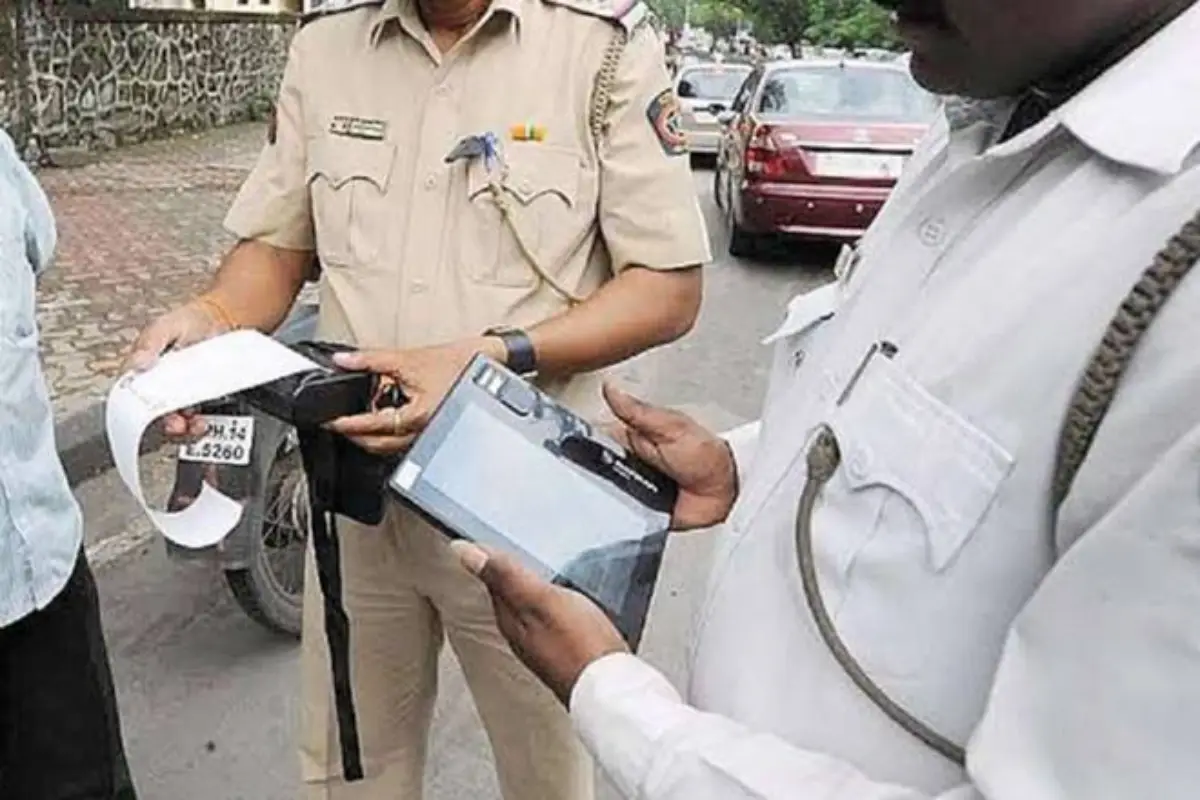

The Virtual Traffic Court requires five secretarial staff to deal with the cases, currently, only one judge is working with one staff in each virtual court.
Virtual Traffic Court in Delhi: According to a report in Times of India, Abhimanyu, a government employee, had to go through a lengthy legal process after he was booked for a traffic violation in early 2020 and paid a fine. Repeatedly visiting the court was as difficult as the long queues, paperwork and indefinite wait in a packed courtroom. However, in the end, it only took a few minutes of video conferencing for him to explain his position on the violation and pay a small fine online from the comfort of his home. A digital ecology created by the Delhi High Court was of great help in following the proceedings of his case.
It is a concept which aims to eliminate the presence of litigants or lawyers in the court and settle cases online. These courts are for those who want to pay fines, contest traffic police notices or seek compromise, these courts help in faster disposal of cases with less resources but better time. From April 2019 to mid-November this year, the 11 courts set up in Delhi to deal with virtual traffic challans have disposed of more than 2.1 crore petitions.
High Court officials said that the virtual court system was considered by the e-committee of the Supreme Court to enable paperless settlement of traffic bookings and e-payment of fines imposed. The court administration, in collaboration with Delhi Traffic Police, has developed a module that sends an SMS notice of challan for a traffic offence to the offender, after which he has the option to pay the fine online or contest the notice.
Thereafter, if the violator chooses to confess, the person is redirected to the e-payment gateway and if the challan is contested, the case is automatically sent to the concerned traffic court for disposal. In the Virtual Traffic Court, according to the Motor Vehicles Act, instructions are given by the presiding officers to impose or waive the fine. After this, violators can pay the fine online without coming to the court.
However, this facility is completely different from the Traffic Lok Adalat conducted by the Delhi Legal Services Authority, where the fine amount can be reduced or waived, but for this, the violator will have to be physically present. Online courts aim to make proceedings easier for those who want to contest a booking or pay a fine. A link for Virtual Court is available on the website of the District Courts so that the violator can appear online at vcourts.gov.in. The violator is also informed about the date and details of the hearing of the Digital Traffic Court.
Officials associated with the setup said that the violator can present documents, make submissions or give evidence in the virtual court. If the court imposes a fine, it can be paid online without going to the physical court. Both the driver and the owner have been booked together for several offences under the Motor Vehicle Act. Virtual court attendance helps save time as neither the driver nor the owner has to set aside time for a physical appearance in the court.
The High Court had earlier said, "This is the most convenient way to dispose of the challan without unnecessary hassles and harassment. It also saves precious time of the Court in respect of small traffic challans." Advocate Rajat Katyal said, "A large number of people visit the courts every day and the litigants are stressed by appearing in the court. Virtual courts have minimized the hassle of such a crowd of people travelling to the court on a fixed day. They do not have to come to the courts, this is a big convenience for them and the pressure on the courts also reduces.”
The Virtual Traffic Court requires five secretarial staff to deal with the cases, currently, only one judge is working with one staff in each virtual court. Although it is economical in terms of human resources and expenditure, according to sources digital courts are often being shared among four judicial authorities, hence, some challenges remain.
For example, photographs of the objected vehicle are often not visible in the judge's system in virtual courts, such glitches are now being rectified. The system has also been upgraded to show the fine amount paid by the violator in real-time through the online portal against the challan, which will enable the court to keep track of the total fine pending before disposal.
Due to the large number of traffic bookings in a vehicle-heavy city like Delhi, dedicated servers for virtual hearings have been upgraded from time to time. Sources say that the Information Technology Committee of the High Court, headed by Justice Rajeev Shakdhar, wants to create such digital traffic courts in every district court of Delhi. The committee has also recommended digital courts for appeal and review. In April, the Chief Justice of India, while inaugurating digital traffic courts